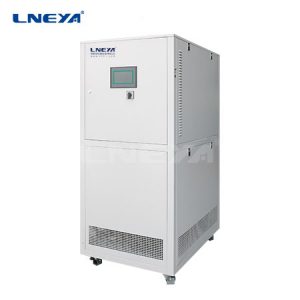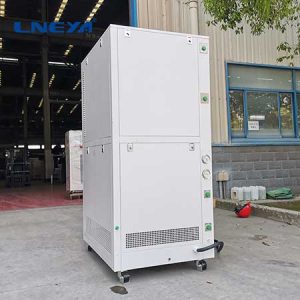What are the antifreeze protection measures for the circulation chiller?
Due to the fact that most units are placed outdoors and have relatively low temperatures compared to indoors, for air-cooled units, there is no cooling water circulation system. Therefore, it is necessary to increase the antifreeze protection of the fan, check and add an appropriate amount of lubricating oil. If not used for a long time, the air-cooled unit should be cleaned, coated with protective oil, and placed in a frozen unit; During intermittent use, it is necessary to ensure sufficient water flow and pressure in the system to prevent internal water from freezing and damaging the unit.

Although the LX -25°C ~ +30°C Refrigeratori a ricircolo is generally located in indoor or underground machine rooms, and the ambient temperature is slightly higher than that of the air cooler, the circulating cooler relies on water circulation to transfer heat, rather than fan cooling. Therefore, sufficient antifreeze measures should be taken for pipelines and systems involving water.
Antifreeze measures for circulating coolers
One is to add an appropriate amount of antifreeze, as both high and low antifreeze content can cause harm to the system. Adding too much antifreeze can cause corrosion of the pipeline, pipe wall, and tower body.

The second is to pay attention to the situation of refrigerant and refrigerant oil. When the temperature is too low, the refrigerant may change its properties, and the refrigerant oil will increase its viscosity due to the low temperature, resulting in compressor wear and tear during operation. So in winter, pay attention to the condition of refrigerant oil and refrigerant.
For winter environments where the temperature drops below 0 degrees Celsius and the chiller is not used for a long time, the equipment should be drained in a timely manner. The chiller: pipeline: water pump: chiller tower: valve: connecting part should be drained to prevent water from freezing and damaging the equipment.
Drainage methods:
1: Condenser, open one end cover of the condenser to drain internal water.

2: Evaporator, open the drain valve under the evaporator connecting pipe to drain water. It is best to keep the drain valve normally open and turn it off next year.
3: Water pumps and pipelines should drain water at the lowest point.
4: Cooling tower, open the drain valve of the cooling tower water tray to discharge water.
5: At the end, the drain valve at the bottom of the coil is opened to remove moisture and is in a normally open state, closed next year.
 LNEYA
LNEYA
 简体中文
简体中文

















































































